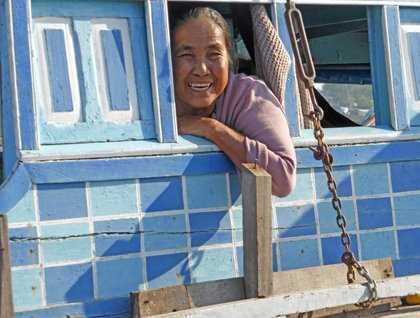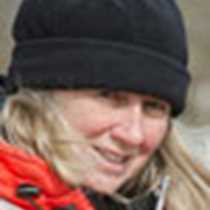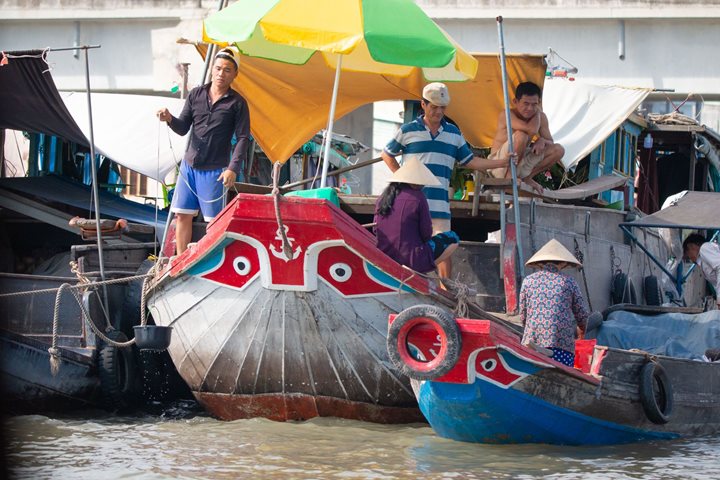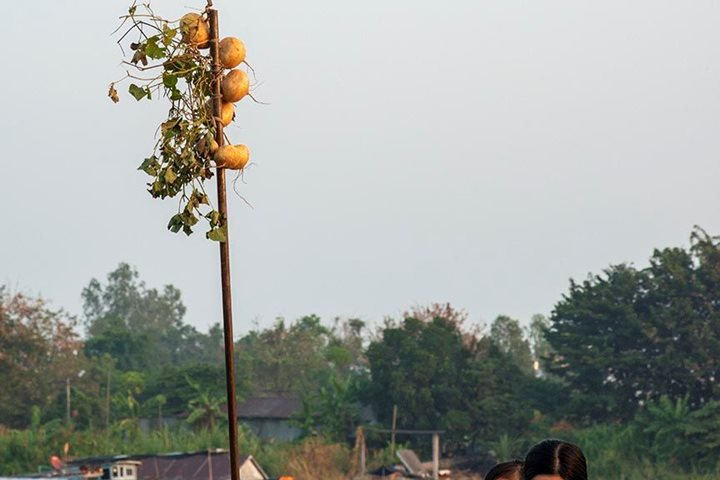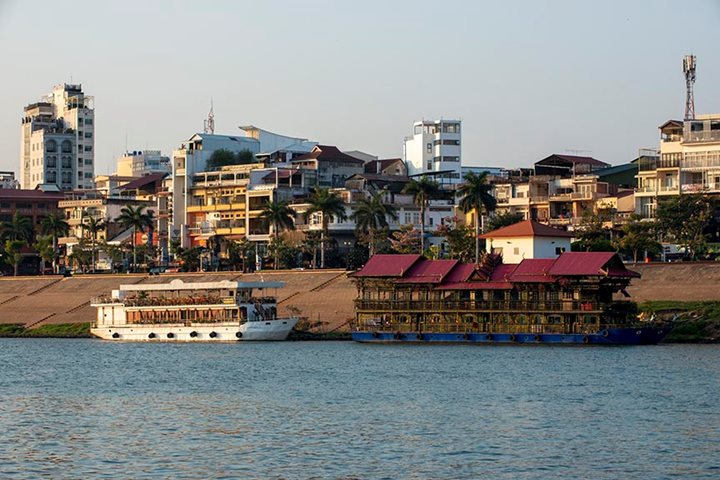It probably sounds somewhat nonsensical to say that morning and evening were as different as day and night, or as different as the sun and moon or oil and water. But they were. The mighty Mekong tumbles from the Tibetan plateau to its flat delta transiting worlds divided by geography and cultures. Today we found ourselves in a transition zone, the border between Vietnam and Cambodia.
The land stretches away from the water, endless and flat except for evidence upon the banks that seasonally the river levels change. Channels merge and diverge both naturally and via myriads of man-made canals that chop the land into fragments as they connect the nine mouths of the flowing dragon. Thus it is difficult to decipher which branch is which when following the typical meandering course of water flowing through a delta.
South of Chau Doc on the branch known as the Bassac, morning was heralded not only by the rooster crows but the sounds of civilization; dogs barking, a loudspeaker broadcasting the morning news, and the ever-present putt-putting of long-tailed boats and barges. As the sun dropped below the horizon this evening, the only sound was that of our own throbbing engines.
Lights lined the banks as dawn brought luminosity to our world and we found ourselves surrounded by a bustling, busy commercial center. Fishing nets were lowered and raised by an ingenious lever system or by numerous other innovative techniques. Beneath floating houses, hidden nets surrounded pampered bassac, tilapia or carp, a lucrative source of income for the owner of the home. Wholesale boats rafted below the city of Chau Doc and sampans piloted by brightly clad women ferried between the vessels, their open air “shopping mall.” On shore trucks and motorbikes competed with our trishaws as we were “driven” through the town. Vendors of every type lined the sidewalks and filled a market square overflowing with produce and other wares. Transiting the Tan Chau canal to join the main branch of the Mekong, we discovered much the same scene. Houses lined the riverbanks and boat traffic was as intense as traffic had been on land.
Early afternoon found us at the border between Vietnam and Cambodia as we continued our transit upstream. Suddenly silence dominated. Vessel traffic disappeared. No longer were the shores lined by stilt houses standing shoulder-to-shoulder upon the banks. Trees topped the steep embankments and cattle grazed in openings here and there. Private dwellings were few and far between. Sweeping lines of numerous golden pagodas hinted at the size of the population nearby. Islands rose from the river, their rich soils providing nutrients for corn and chiles and squash. Flocks of terns drifted by and egrets paced upon the flats.
We are in Cambodia now, a neighbor and yet a world apart from Vietnam.

